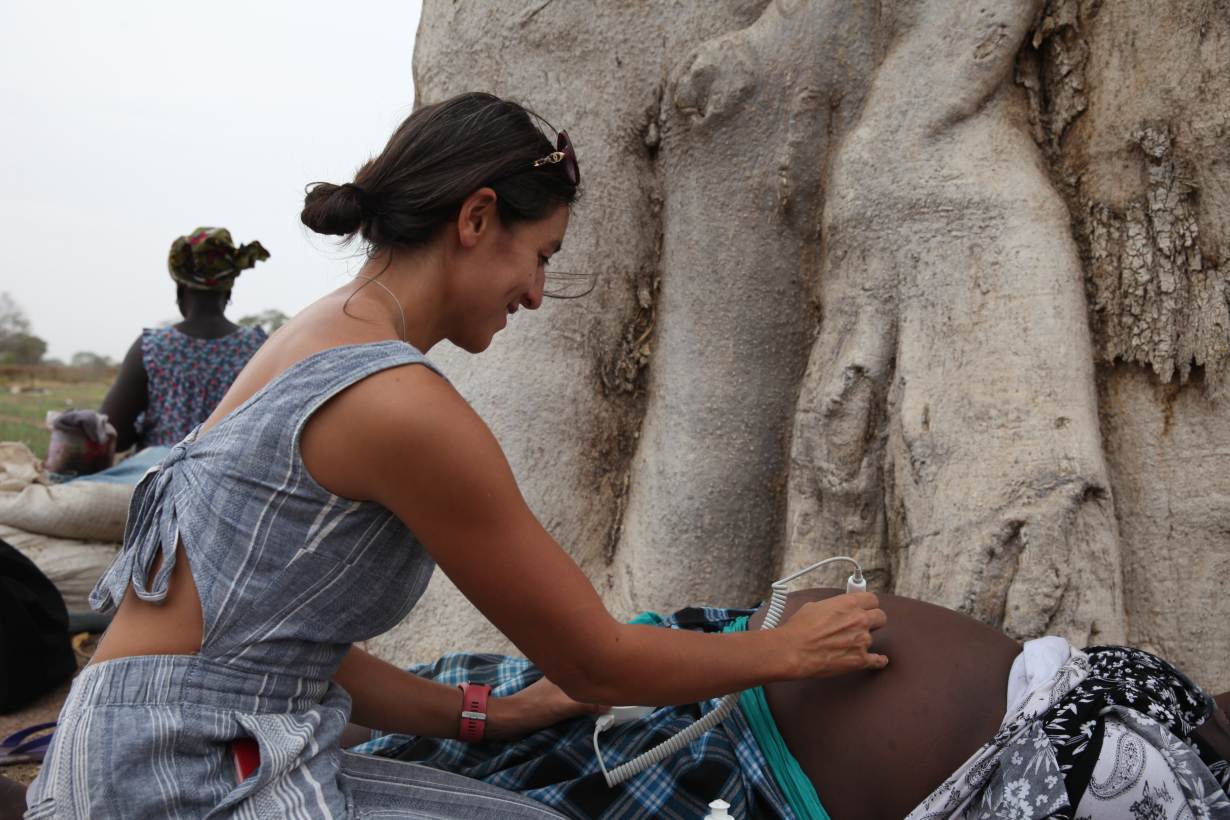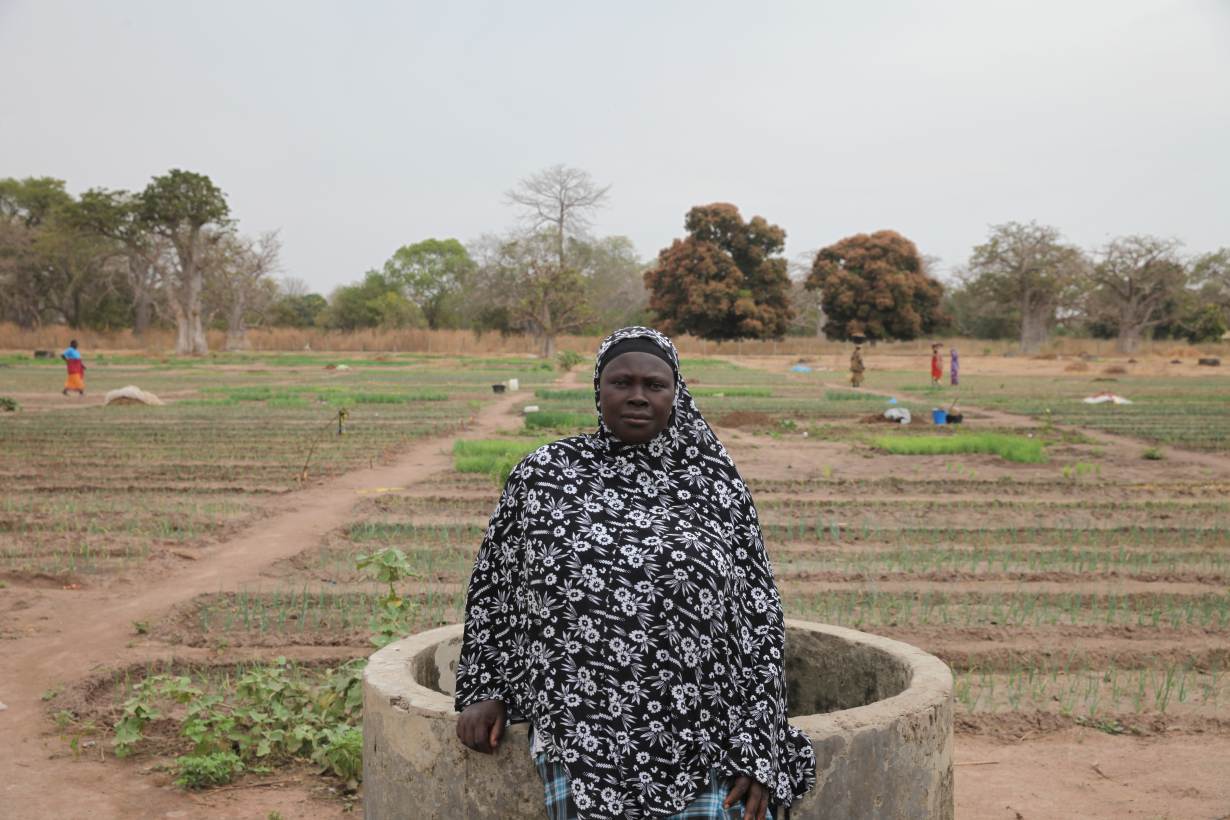Tracking pregnancies in The Gambia suggests rising temperatures may cause premature birth boom
A first-of-its-kind study is looking at how extreme heat could affect pregnant farmers and their babies. The findings could help communities devise ways to protect vulnerable outside workers such as shifting work to different times of day or improving access to shade.
S
irreh Samateh has worked outdoors through all eight of her pregnancies, labouring in the sun to grow rice and vegetables in her Gambian village of Jali.
But each recent year has been hotter than the last, said the 41-year-old, who is seven months pregnant, as she joined other village women hauling water from a well for their onion patch.
Last week temperatures in her region hit 42 degrees Celsius (108 Fahrenheit) – and this is the cold season.
“My previous pregnancies were not so difficult but now, around two to five o’clock, my whole body feels hot,” said Samateh, a flowered veil covering her head and pregnant belly.
“When I’m working in the sun I feel dizzy and my whole body shakes,” she told the Thomson Reuters Foundation.
Samateh is taking part in a first-of-its-kind study to figure out how such heat affects both mother and baby, as growing evidence suggests it may lead to premature births and low birth weight, said health researcher Ana Bonell.

Dr Ana Bonell scans a research participant in Jali, Gambia. Photo by Thomson Reuters Foundation/Nellie Peyton
As the planet warms, some regions – including the African tropics – are heating up faster than others.
Periods of extreme heat are becoming longer and more frequent, and that has dangerous effects particularly on vulnerable groups including the elderly, infants, and people who work outdoors, scientists say.
“We know that many African subsistence farmers are women, and they’ve been a neglected area of research,” said Andy Haines, a former director of the London School of Hygiene and Tropical Medicine and a supervisor of Bonell’s research.
That means “this work is potentially very significant”.
Signs of foetal distress
Large studies from the United States and Europe have shown that higher temperatures are linked to an increase in premature births and babies born underweight, but they have not demonstrated how or why it happens, said Bonell, a doctor specialising in tropical medicine and maternal health.
To try to answer that question, she has observed 50 pregnant women so far in an ongoing study for the Medical Research Council (MRC) Unit The Gambia at the London School of Hygiene and Tropical Medicine. She aims to monitor 125 in total.
In about 30% of the women, Bonell said, she has seen signs of foetal distress – either a high foetal heart rate or not enough blood going to the baby – when mothers work outside in the heat.
More sun, less rain
Paragraph before imageGambian women said they see weather patterns changing and heat rising but there is relatively little they can do to adapt.
“The sun is getting hotter and we have a smaller amount of rain during the rainy season,” said Jankey Drammeh, a 44-year-old farmer who is eight months pregnant with her 11th child.
“For four years now we have noticed these changes,” she said.
When it gets too hot she stops and rests for a bit, pours some water on her head, and then keeps working, she said.Paragraph before image

Farmer Sirreh Samateh is taking part in the study. Photo by Thomson Reuters Foundation/Nellie Peyton
When people’s bodies are exposed to heat, more blood flows to the skin to allow heat to escape and to cool them. This means less blood flowing to the heart and internal organs, including potentially the placenta, said Bonell.
In studies where pregnant sheep were put on a treadmill in the heat, scientists found a decrease in blood flow to the placenta, which is critical for normal foetal growth.
For ethical reasons, this type of study has not been done on humans.
Bonell’s research consists of observing, throughout a single day, changes in uterine blood flow and foetal heart rate in pregnant women who normally work in high heat.
She scans her subjects in the middle of the workday and if there are worrying symptoms she encourages the mother to rest or brings her to a clinic, she said.
“I’m definitely seeing changes in the umbilical artery in about 30% of women,” she said, although she has not analysed the data yet.
That would correspond with previous, unrelated studies showing that about 35% of all outdoor workers develop heat strain.
After a year, Bonell – who started her study in August – hopes to be able to show that heat does have negative effects on the foetus. She then plans to carry out a larger study to establish the link with prematurity and other birth outcomes.
Premature birth complications are the leading cause of death for children under five, and preterm birth rates are increasing around the world, according to the World Health Organization.
Climate change is predicted to have huge impacts on human health, ranging from a rise in infectious diseases to more antibiotic resistance and growing malnutrition.
Few studies have been done in Africa, and scientists last month pledged to double down on research in this area at an international health conference hosted by the MRC Unit in Gambia.
“One of the obvious and direct effects of climate change is going to be to reduce the ability of people to work outdoors,” said global health expert Haines.
“Given that we can’t cut emissions tomorrow, we do need to adapt,” he said.
Adapting to extreme heat to help protect mother and child
Bonell also is thinking about potential ways to cut risks for pregnant mothers since most of her subjects will need to keep working to feed their families – even if it puts their health and their baby’s at risk.
Immediate fixes for at-risk outdoor workers may include shifting work to different times of day, improving access to shade, ensuring workers get enough water and providing temperature monitoring for the most vulnerable, said Haines.
To protect pregnant women, broader socio-economic changes also may be needed to help ensure women don’t have so many pregnancies or work so hard, Bonell said.
In Jali, the women said they were more concerned about their livelihoods than their health.
“I feel very worried about (climate change) because the aim of every farmer is to gain something,” said Drammeh.
“But every year we work harder and at the end of the day gain less.”
The ideas presented in this article aim to inspire adaptation action – they are the views of the author and do not necessarily reflect those of the Global Center on Adaptation.